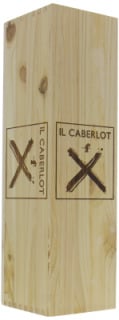Cote Roti La Turque 2006 Guigal
| Classificatie | Cru Classe |
| Wijnsoort | Rood |
| Producent | Guigal |
| Jaar | 2006 |
| Land | Frankrijk |
| Streek | Rhone |
| Inhoud | 0,75 |
| Conditie | Perfect |
| Etiket | Perfect |
| Drinkbaar | -2030 |
| Voorraad | 0 |
Professionele reviews
Robert Parker (94)
The 2006 Cote Rotie La Turque’s dark purple/plum hue is similar to La Mouline’s, but with slightly more opaqueness. A denser, but seemingly less complex style of wine, it offers notes of animal fat, creme de cassis, charcoal and new saddle leather in its full-bodied, ripe, rich personality. This 2006 will benefit from 2-4 more years of bottle age and drink well for 25-30 years thereafter.
As I have written many times before, no one in the wine world is better at “raising” a wine (or as the French call it elevage) than Marcel Guigal, who learned the skills from his father, Etienne. Because everyone tends to focus on vintage conditions and terroir, the importance of a wine’s elevage is often overlooked, but Guigal’s unusually long tank, foudre and small barrel aging regime for all his red wines as well as several of his whites results in an array of remarkable wines time and time again. Even the most challenging vintages, which often taste under-nourished, vegetal and thin in their first year or two of life, tend to take on concentration and character, turning out to be some of the finest wines in many of the most difficult Rhone vintages. Moreover, Guigal’s wines always taste better out of bottle than from barrel, which speaks to his honesty and integrity as well as to his brilliance in deciding how long to age a wine in wood or tank as well as choosing the perfect moment to bottle it. None of this is as simple as it might sound, and that’s why Marcel Guigal gets my vote as the reigning genius in terms the upbringing his wines. For ten to twelve years after my first visit to this estate in the late 1970s, I tended to think of Guigal as primarily a red wine specialist. I still believe the red wines are the heart and soul of Maison Guigal, but the quality of the white wines has gone from strength to strength over the last few decades, and the Guigal family now routinely produces some of the finest dry whites of the entire Rhone Valley, including their humble Cotes du Rhone, and more particularly their white cuvees of Crozes-Hermitage, St.-Joseph, Hermitage and Condrieu. They produce more of the latter wine than any other proprietor of this tiny appellation. Guigal’s 2008 whites have turned out surprisingly strong. Guigal’s luxury cuvee of Condrieu, La Doriane, comes from the estate’s tiny holdings in some of the appellation’s finest terroirs, such as the Cote Chatillon, Volants, Colombier, and the Coteau Chery. Aged in 100% new oak (although it never shows any oakiness) and put through 100% malolactic fermentation, lees stirring is employed for La Doriane until the malolactic is finished. It is usually bottled after 12-14 months. Guigal’s red wines possess some of the lowest sulphur dioxide levels of any finished wines I have ever tasted. Most of them are approximately 10 ppm (parts per million) total SO2, which is virtually nothing. That said, the wines always age incredibly well, which goes back to Guigal’s brilliant, patient, long-term barrel, tank and foudre aging. The current value picks in Guigal’s red wine portfolio are his Crozes-Hermitage (one offering made) and his three St.-Joseph cuvees. Tasting through Guigal’s single vineyard Cote Roties, La Landonne, La Mouline and La Turque, is equal to tasting through a museum dedicated to the world’s most compelling wines. Each is treated differently, although there are similarities. La Mouline always comes from the Cote Blonde, La Turque and La Landonne from the Cote Brune; La Mouline is co-fermented with 11% Viognier, La Turque with 5-6% Viognier and La Landonne is 100% Syrah. La Mouline, made from the oldest vines (over 60 years), is vinified by pump-overs; La Turque is vinified by punching down the cap; and La Landonne is vinified in a modern system of cap immersion. All of these techniques tend to produce different tannin levels as well as types of tannin. Despite the fact that these wines spend 42 months in 100% new French oak, the wood component disappears in the character of the wines at about age 6-10. Moreover, these cuvees are rarely racked and are not sulphured until prior to bottling. The total parts per million of SO2 in the three cuvees runs between 8 and 15 parts per million, which is essentially nothing. In even the worst Northern Rhone vintages, Guigal somehow manages to produce amazing wines from these vineyards. The first vintage for La Mouline was 1966, La Landonne 1978, and La Turque 1985. Of course, these wines are bottled with neither fining nor filtration. 1991 was a great year for Guigal’s single vineyard Cote Roties, and 2007 is the first vintage since that reminds me so much of that vintage. 2008 was a challenging vintage for the single vineyard Cote Roties. Yet fine wines have been produced in this difficult year – a testament to the skills of Marcel Guigal and his son, Philippe.
Winespectator (96)
This pulls together grip, minerality and fruit, with charcoal and espresso laying the foundation for crushed plum, fig sauce and mulled currant fruit, which then gives way to a vibrant, iron- and tobacco-filled finish that leaves a mouthwatering feel. Very impressive.
































